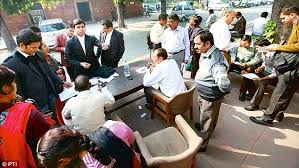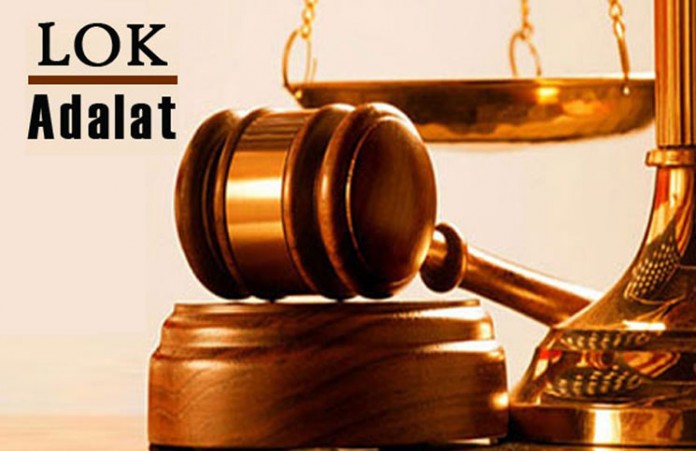In this blog post, Shivali Wal, who is currently pursuing a Diploma in Entrepreneurship Administration and Business Laws from NUJS, Kolkata, discusses and analyzes permanent Lok Adalats in India.
Introduction – Dispute Resolution In India
The evolution of Lok Adalats in India began with the enactment of the Legal Services Authorities Act of 1987. Alternate dispute resolution has, since time, formed an essential component of our judicial past. Lok Adalats have successfully broken new grounds in the realm of Indian jurisprudence. The system of Lok Adalat in India means ‘People’s Court.’ The word ‘Lok’ depicts ‘people’ and the term ‘Adalat’ stands for ‘court.’
In India, a mindful understanding of the need for an alternative approach to the resolution of legal and social disputes has always been observed. Through history, we can find impressions of the existence of such dispute resolutions in our ancient societies. On a grass root level, it is the system of ‘panchayat,’ which reflects the practices of alternate dispute resolution. This scheme provides relief to people all over India, as it is essentially a rural remedy.
It is the system of Panchayats and their schemes of dispute settlement by using means such as mediation, negotiation, and arbitral process through ‘Nyaya panch’ that forms the underlying idea of Lok Adalats. The philosophy of Lok Adalats rests on involvement, justice, fairness, clarity, independence and absence of malice. Today, it is not only the people who directly seek relief but also people who indirectly seek relief that turn to the benefit of Lok Adalats.
Evolution Of Lok Adalats
The motive behind adopting and establishing this philosophy was to share the burden that was cast upon Indian courts to provide justice to the awaiting litigants. It was on March 14, 1982, at Junagarh in Gujarat that the first Lok Adalat was held. Lok Adalats have witnessed success in settlement of many cases such as family disputes; related to labor, bank recovery, etc.
Lok Adalats are conceptualized along the idea of equal opportunity. Hence, justice should be served to each, and it cannot be refused to any citizen of India by any discrimination, be it economical, social or political. When a statutory status was provided to Lok Adalats, it was mentioned that in case Lok Adalat passes an award or a compromise, it will be held equivalent to the decree of a court, executable as a decree of a civil court.
Benefits Of Lok Adalats
There are endless benefits that litigants can derive from this system.
- First, the absence of any court fees makes it highly economical and approachable by the weaker societies. Moreover, if a case has previously been filed in any court, the fees charged by this court will be returned as soon as the matter is filed with Lok Adalat.
- Secondly, there is a lot more flexibility with regards to procedural rules and the weight of Evidence Act during the assessment of any claim. The aggrieved party and the defendants can directly interact and communicate with the judges of Lok Adalat despite being represented by their advocates.

- Thirdly, Any matter can be presented directly to the Lok Adalat instead of going through any court. Since time is of the essence in most of these cases, having a fast track and cost effective system such as this can be beneficial to many.
- Fourthly, Lok Adalat’s decision is binding on the parties, and the same can be executed with a legal process. The decision of Lok Adalat cannot be appealed to higher courts unlike the other courts of law which usually results in a delay of the proceedings. This is because the decision made in a Lok Adalat is mutually settled as opposed to a verdict given in other courts. Hence, the need for an appeal should not arise if the settlement consents.
The most important feature of this system is the fast track, affordable remedy that is available to people at large. The system has received laurels from the parties involved in particular and the public and the legal functionaries, in general. Voluntary participation is an essential element of this kind of a solution. It is an assumed fact that the participating parties have decided to come to a mutual settlement amicably.
Studies have shown that in countries that are undergoing development, around 90% of the disputes are settled in alternative courts, and only 10% are settled in the traditional courts. In India, Lok Adalat is the need of the day, given that the amount of the legal fraternity is not proportionate to the disputes. Therefore as a support to this, Lok Adalats help the courts to lift the burden laid upon them.
Permanent Lok Adalats
The basic features of a permanent Lok Adalat are identical to a Lok Adalat. There are, however, certain modifications made. The key difference is that a typical Lok Adalat can only be summoned occasionally and not on a daily basis, a permanent Lok Adalat is an established system which is operational throughout just like any other court or tribunal.
The Legal services Authorities Act, 1987, which had established Lok Adalats, did not, at first, establish permanent Lok Adalats.It was the Amendment Act of 2002 that enabled the establishment of the first permanent Lok Adalat.
In 1999, during the second annual meet of state legal services authorities, the then Hon’ble Chief Justice Dr. A.S. Anand airing his views stated that:
“There will be no harm if Legal Services Authorities Act is suitably amended to provide that in case, in a matter before it, the Judges of the Lok Adalats are satisfied that one of the parties is unreasonably opposing a reasonable settlement and has no valid defence whatsoever against the claim of the opposite party, they may pass an award on the basis of the materials before them without the consent of one or more parties. It may also be provided that against such awards, there would be one appeal to the court to which the appeal would have gone if a court had decided the matter… This course, I think, would give relief to a very large number of litigants coming to Lok Adalats at the prelitigation stage as well as in pending matters.”
In 2002, certain changes were brought about by the Parliament in the Legal Services Authorities Act, 1987 which introduced Chapter VI-A with the title ‘PRE-LITIGATION CONCILIATION AND SETTLEMENT.’
Section 22 B considers the establishment of PLA at numerous places with consideration towards the cases and on public utility services.
Permanent Lok Adalat is presided over by a chairperson, who:
- Is a district judge or has been one.
- Is an additional district judge
- Has held judicial office higher in rank than that of a judge of the district court
Along with the chairperson, the government also appoints two other persons who are experienced in the area of public utility service. The state authority or the central authority appoints this person, depending on the case, after a nomination by the respective government has been made.
The nomination too can only be made at the suggestion of the central or the state authority.
It is provided in S.22 C(3) that there are certain procedural rules that apply. In the case of an application being filed which raises a dispute, the parties are meant to make a filing of statements in a written form supported by appropriate proof. This proof can be in the form of a document or any other evidence.
The copies of this file document and the statement produced shall be provided to each of the parties. Following this procedure, PLA (Permanent Lok Adalat) shall hold conciliation proceedings to reach an amicable settlement to the dispute.
The functioning of the settlement depends on upon the cooperation between the parties and the PLA, which must always be in good faith. If the PLA believes that the proceedings of the settlement are reasonable and acceptable given the parties, then it may conclude the settlement at the choice of the parties. Following this, it must communicate its observations to the parties and upon the agreement of the parties, they must approve the settlement through the means of signature, and the award must be passed. At the end of the settlement, a copy of the settlement should be handed over to each of the parties.
Section 22 c(7) further provides that in case the parties fail to form consensus over the settlement, the PLA shall decide the dispute, as long as the dispute does not relate to any offense.
Conclusion
The establishment of Permanent has proved to be a very useful and effective mechanism. It is a friendly system not only for the litigants but the judicial fraternity as well, as it lifts off the burden imposed on the system.
The scope of getting settlements against PUS serves as a crucial platform for ordinary men and women to seek a remedy against their malpractices without undergoing the exhaustive and expensive procedures of a traditional court.
With a change in the economic and social scenario, where the corporate world dominates over the domains of insurance, communications, etc. it is essential that there exists a mechanism that gives relief without being too exhaustive.
Hence, the system is greatly appreciated in a country like India, with a developing economy and society.
 Serato DJ Crack 2025Serato DJ PRO Crack
Serato DJ Crack 2025Serato DJ PRO Crack











 Allow notifications
Allow notifications



